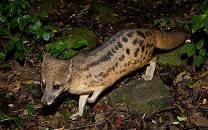
Safari Tours to Ranomafana NP
-
![13-Day Andasibe - Tsiribihina- Baobab Alley - Ranomafana]()
13-Day Andasibe - Tsiribihina- Baobab Alley - Ranomafana
$2,189 pp (USD)
Madagascar: Private tourBudgetCamping & Hotel
You Visit: Antananarivo (Start), Andasibe-Mantadia NP, Antsirabe (City), Miandrivazo (Town), Tsiribihina (Town), Allee Des Baobabs (Highlight), Ranomafana NP, Antananarivo (End)

Soul Of Madagascar Tours
4.9/5 – 35 Reviews
-
![14-Day The Pristine Forests of Madagascar]()
14-Day The Pristine Forests of Madagascar
$2,618 pp (USD)
Madagascar: Private tour
Mid-range Camping & LodgeYou Visit: Antananarivo (Start), Ankafobe Reserve, Antsirabe (City), Ranomafana NP, Ambositra (City), Palmarium Reserve, Andasibe-Mantadia NP, Antananarivo (End)

Malagasya Travel
4.9/5 – 20 Reviews
-
![12-Day Madagascar 1000 Views Tour]()
12-Day Madagascar 1000 Views Tour
$3,960 pp (USD)
Madagascar: Private tour
Mid-range Lodge & HotelYou Visit: Antananarivo (Start), Andasibe-Mantadia NP, Andasibe-Mantadia NP, Antsirabe (City), Ranomafana NP, Isalo NP, Isalo NP, Ifaty (Town & Beach), Antananarivo (End)

Safari With Us
4.9/5 – 246 Reviews

 Madagascar Parks
Madagascar Parks










